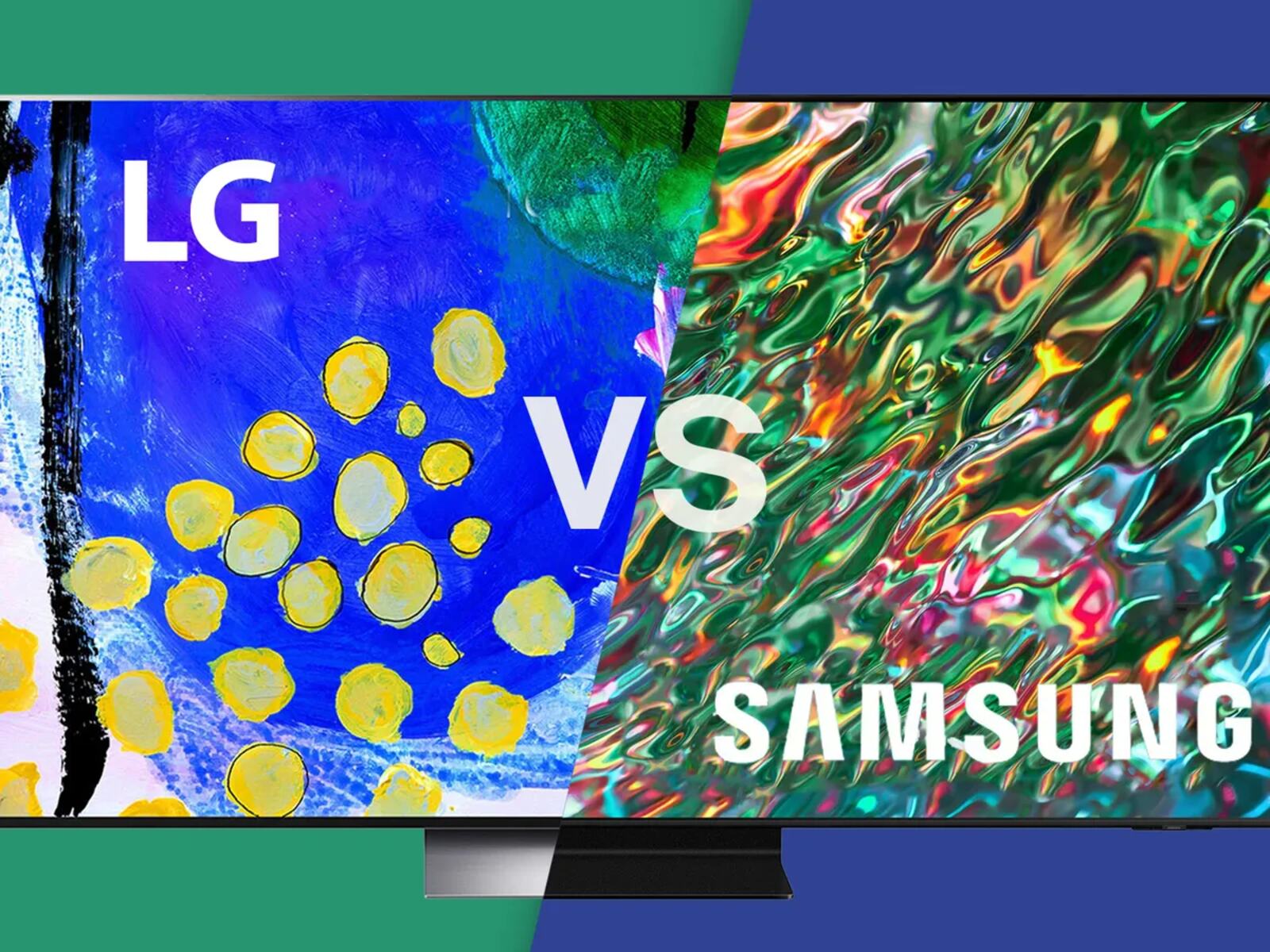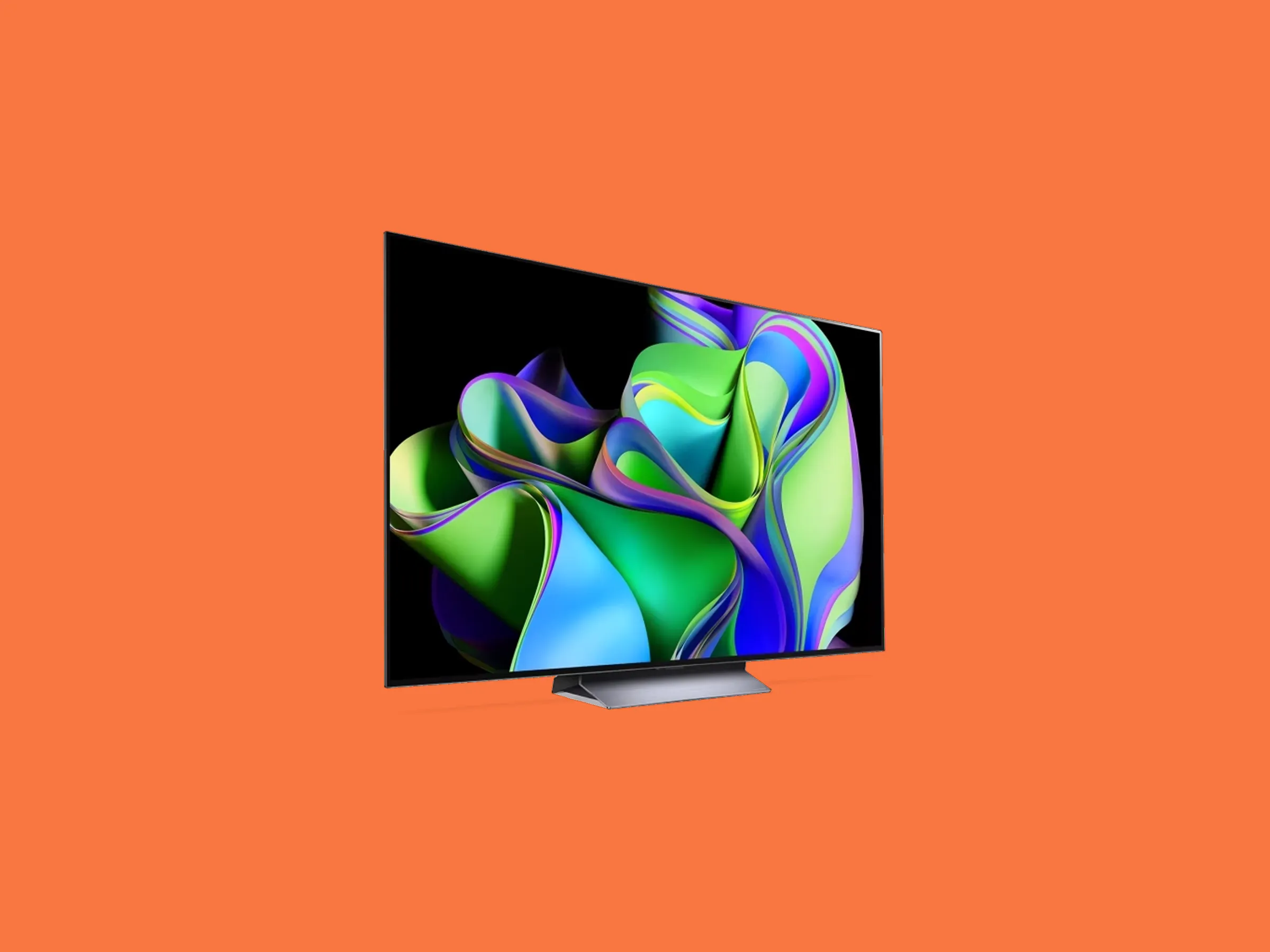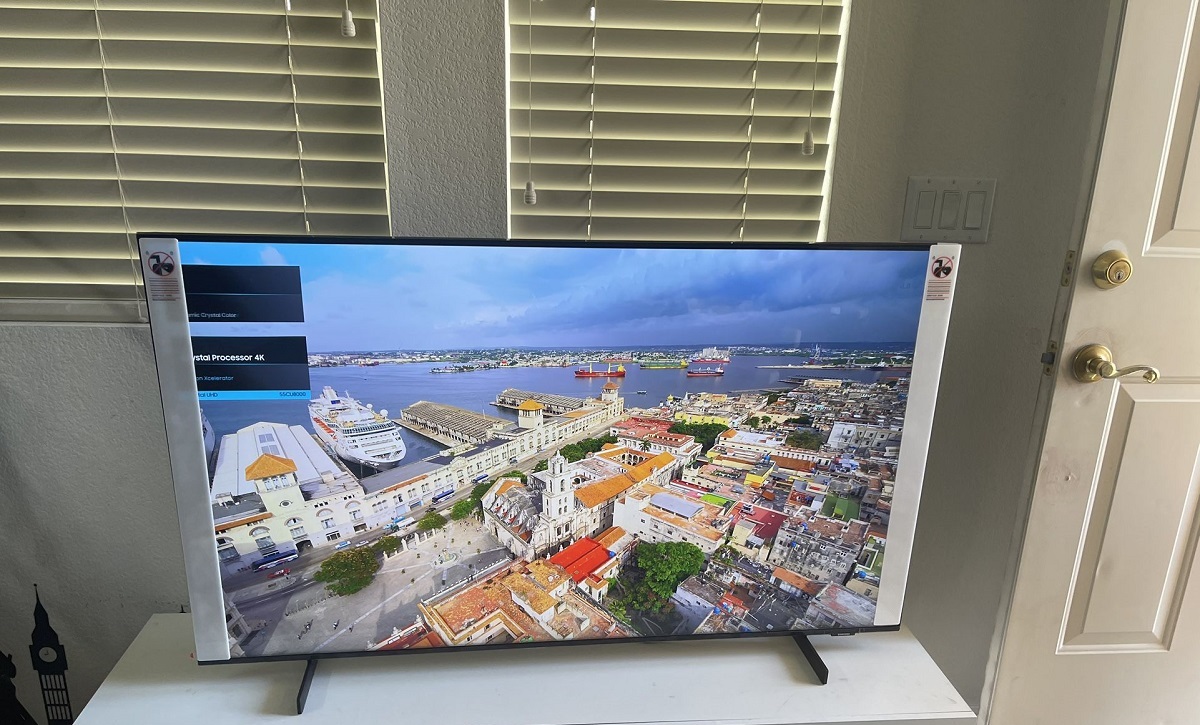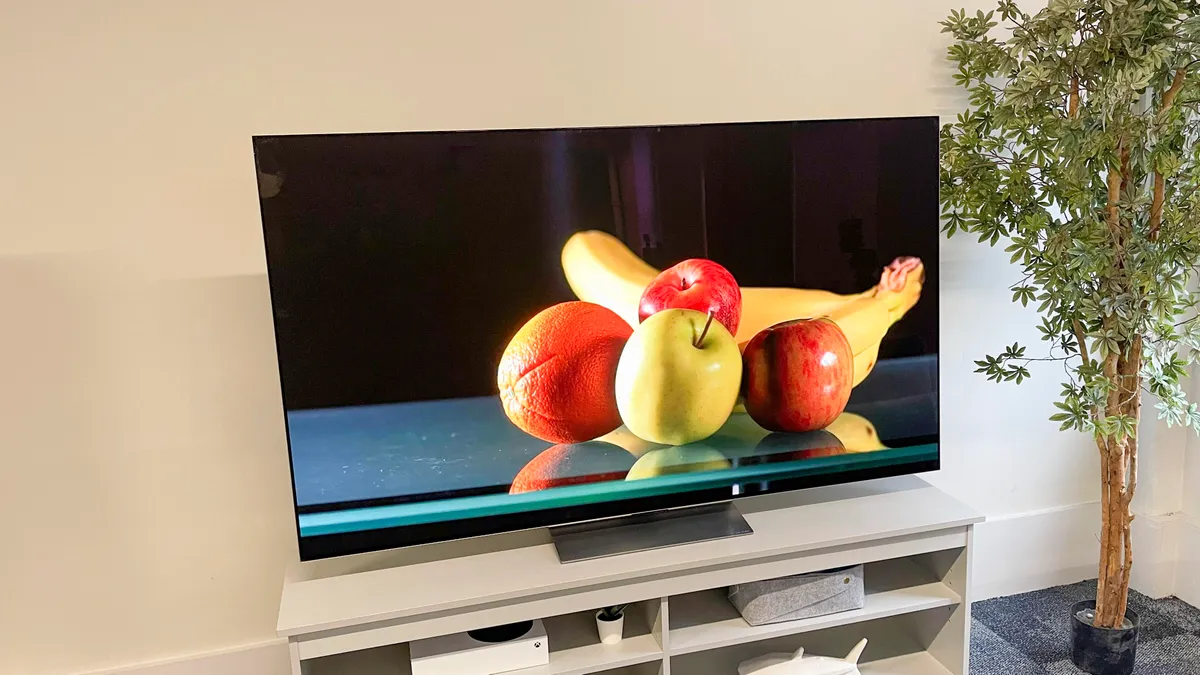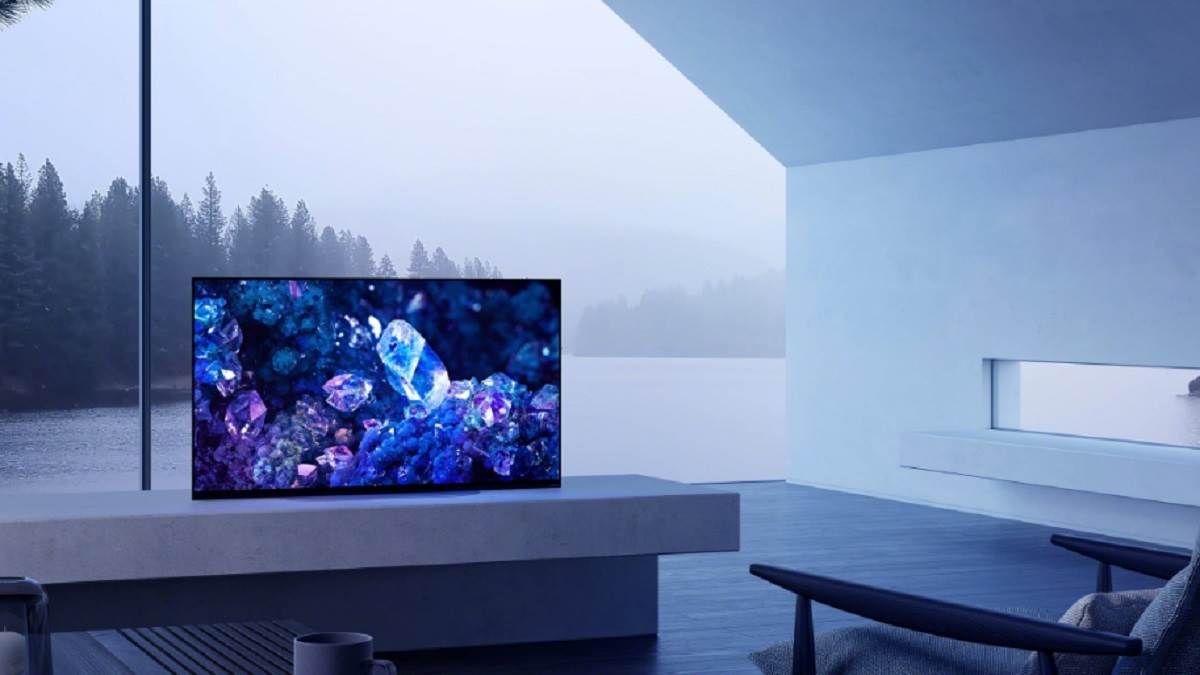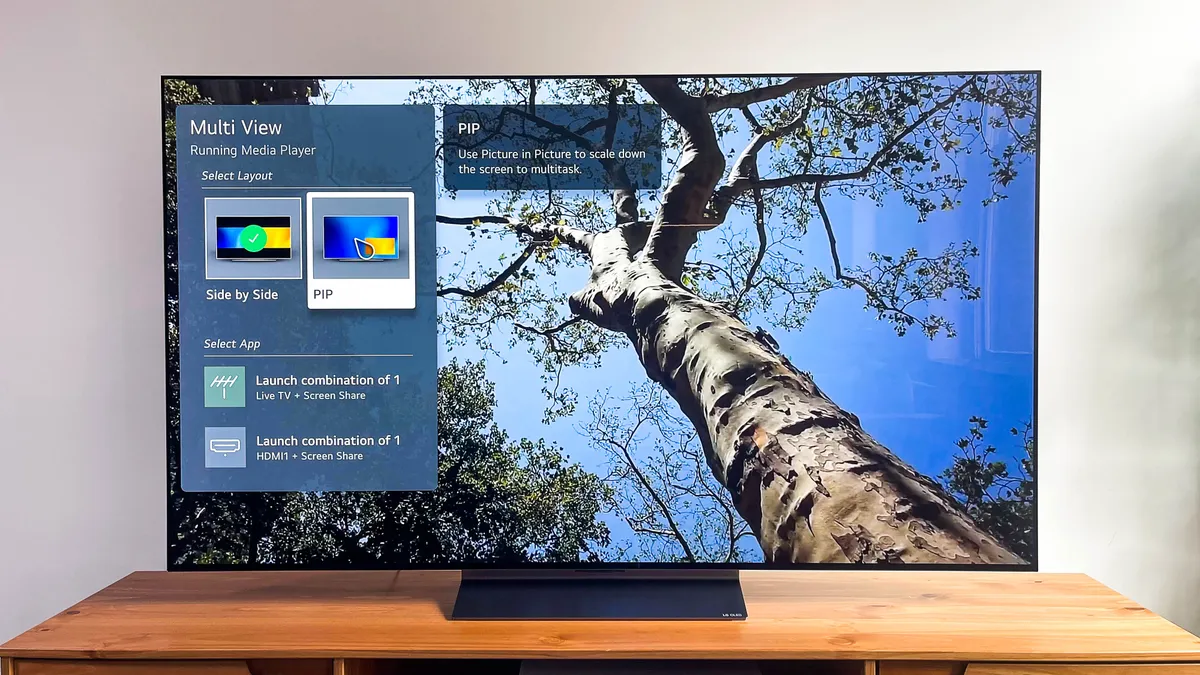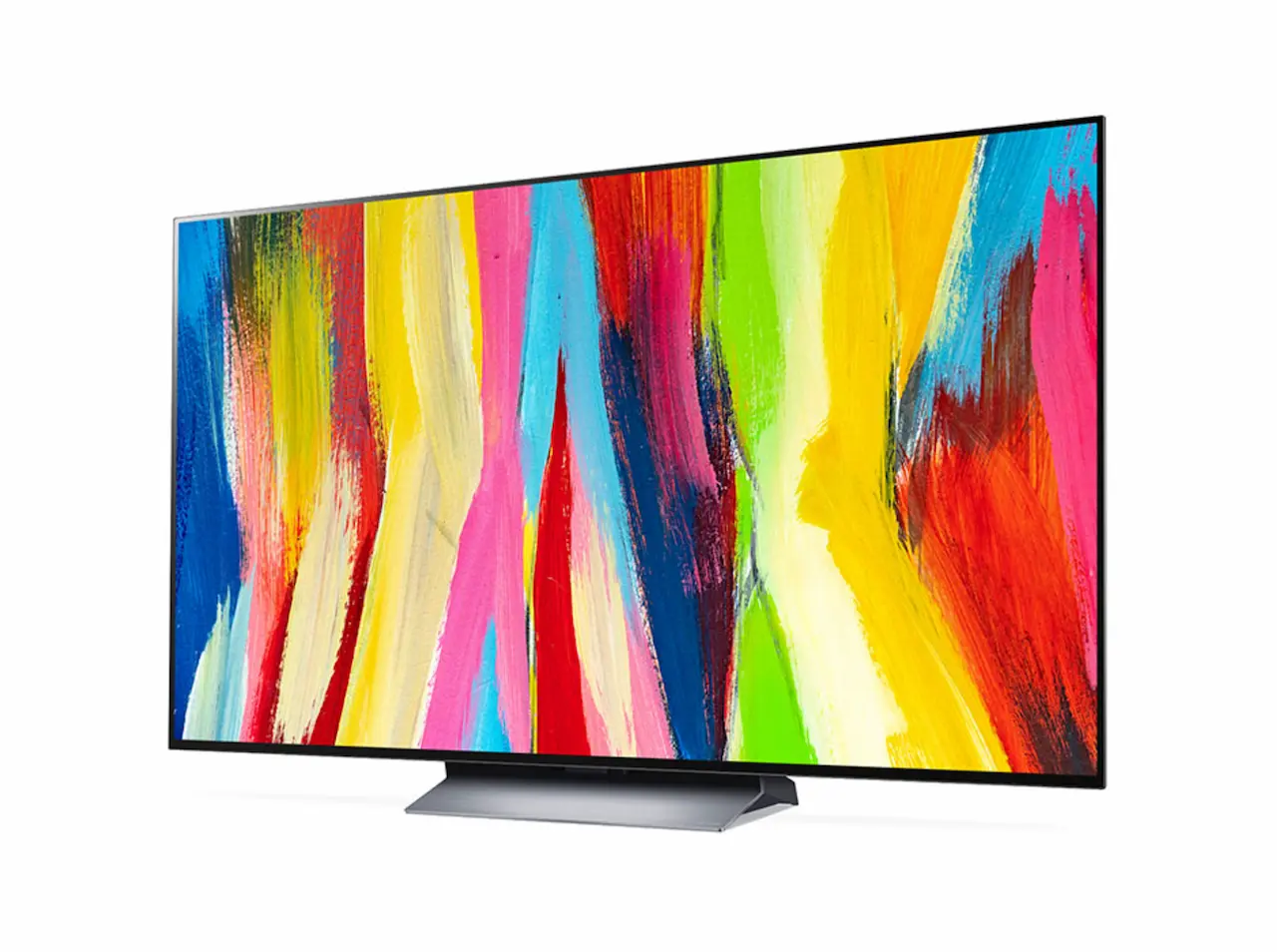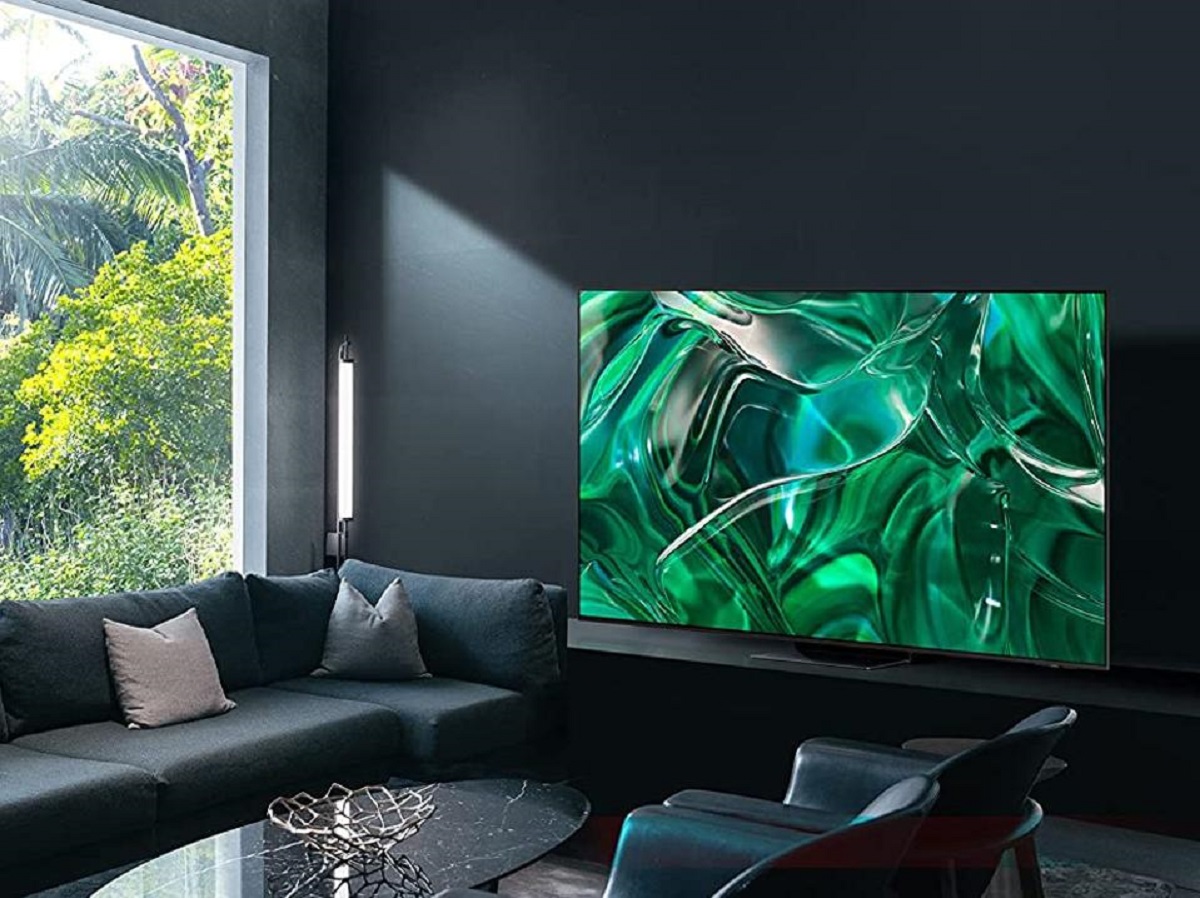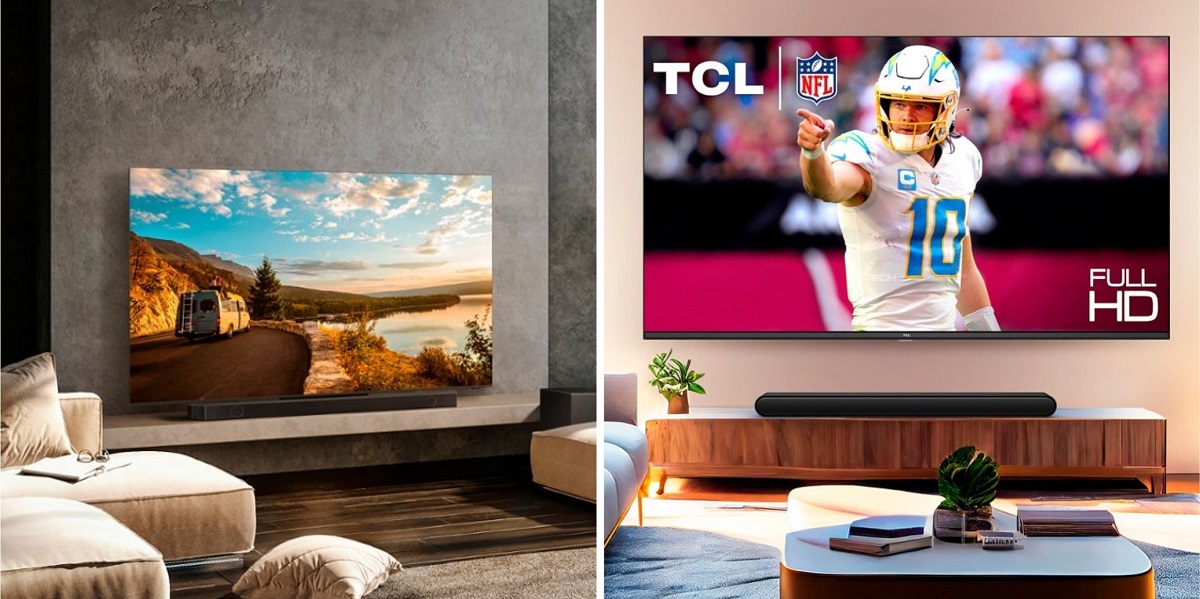Introduction
When it comes to choosing a high-quality television, two prominent brands stand out in the market – Samsung and LG. Each brand offers its own advanced display technologies, Samsung with its QLED (Quantum Light Emitting Diode) TVs, and LG with its OLED (Organic Light Emitting Diode) TVs. Both technologies have gained immense popularity and have their own unique features and advantages.
QLED TVs from Samsung utilize Quantum Dot technology, which enhances the color accuracy and brightness of the display. On the other hand, LG’s OLED TVs offer individually lit pixels that produce perfect blacks and infinite contrast ratios. With such impressive features, choosing between a Samsung QLED TV and an LG OLED TV can be a dilemma.
In this article, we will compare the key aspects of these two TV technologies to help you make an informed decision based on your preferences and viewing needs.
We will explore various factors, such as contrast ratio, color accuracy, brightness, viewing angles, response time, gaming performance, smart features, and price to determine which brand offers the best overall value for money. By examining these factors, we can understand the strengths and weaknesses of each brand’s TV offerings and how they impact the viewing experience.
So, if you’re in the market for a new television and want to know the difference between a Samsung QLED TV and an LG OLED TV, read on to discover the intricacies of these cutting-edge display technologies and find the right one for you.
Display Technology
The display technology used in televisions plays a crucial role in determining the overall picture quality and viewing experience. Samsung QLED TVs utilize Quantum Dot technology, which consists of tiny nanocrystals that can emit different colors of light when exposed to an external light source. This technology enhances color accuracy and widens the color gamut, resulting in vibrant and lifelike images on the screen.
On the other hand, LG OLED TVs employ self-lit pixels, where each pixel can emit its own light without the need for a separate backlight. This allows for precise control over individual pixels, resulting in perfect black levels and infinite contrast ratios. Since each pixel can turn off completely when displaying black, OLED TVs can achieve unparalleled levels of contrast and deliver a visually striking experience.
One advantage of Samsung QLED TVs is their superior brightness levels compared to OLED TVs. QLED panels can achieve higher peak brightness, making them ideal for well-lit rooms or environments with lots of natural light. This can provide a more immersive and vivid viewing experience, especially when watching HDR (High Dynamic Range) content.
However, LG OLED TVs excel in providing exceptional black levels, which contribute to a more cinematic experience. The ability of OLED pixels to turn off completely when displaying black gives a true sense of depth and contrast to the on-screen content. This makes OLED TVs the preferred choice for movie enthusiasts who value deep blacks and rich shadow details.
Both technologies have made significant advancements in minimizing motion blur, but OLED panels still hold a slight advantage when it comes to response time. The individual pixel control in OLED TVs allows for faster pixel transitions and reduces motion blur, resulting in smoother and more fluid on-screen movement.
In summary, while Samsung QLED TVs offer impressive brightness and color accuracy, LG OLED TVs excel in delivering perfect blacks and infinite contrast ratios. Choosing between the two depends on your preferences, the viewing environment, and the types of content you consume.
Contrast Ratio
The contrast ratio is a crucial factor in determining the quality of the picture displayed on a television. It refers to the difference between the darkest and brightest parts of an image, with higher contrast ratios resulting in more vibrant and lifelike visuals.
When it comes to contrast ratios, LG’s OLED technology has a significant advantage over Samsung’s QLED. OLED TVs are capable of achieving perfect blacks by turning off individual pixels completely. As a result, the contrast ratio of OLED TVs is practically infinite, as there is no light bleed from the pixels.
On the other hand, Samsung QLED TVs, with their Quantum Dot technology, rely on a backlight system. This means that even though they can produce bright and accurate colors, there is always a minimal amount of light leakage, which affects the overall contrast ratio. While QLED TVs have made improvements in contrast performance, they still cannot match the deep blacks and contrast offered by OLED TVs.
Having a high contrast ratio is particularly important when watching content that contains both dark and bright scenes, such as movies or nature documentaries. With OLED TVs, dark scenes appear truly black, enhancing the details and creating a more immersive viewing experience. Highlights also stand out, resulting in a more dynamic and visually appealing image.
It is worth noting that contrast ratio is subject to the viewing conditions. In a bright environment, the difference between the contrast ratios of QLED and OLED TVs may be less noticeable. However, in dimly lit or dark rooms, OLED TVs truly shine, showcasing their superiority in producing deep blacks and maintaining contrast.
Ultimately, if achieving the highest possible contrast ratio is a priority for you, LG’s OLED TVs are the way to go. The perfect blacks and infinite contrast ratios they offer provide a more cinematic and immersive viewing experience, especially when watching content with significant variations in light and dark scenes.
Color Accuracy
Color accuracy is a critical aspect when it comes to enjoying a lifelike and immersive viewing experience on a television. Both Samsung QLED and LG OLED TVs strive to deliver accurate and vibrant colors, but they employ different technologies to achieve this.
Samsung QLED TVs utilize Quantum Dot technology, which utilizes tiny nanocrystals, known as quantum dots, that can emit different colors when illuminated by an external light source. This technology allows QLED TVs to reproduce a wide color gamut, resulting in rich and vibrant colors. With advancements in Quantum Dot technology, Samsung QLED TVs can now reach near-perfect color accuracy, delivering highly accurate and true-to-life colors.
On the other hand, LG OLED TVs also excel in color accuracy. Each individual pixel in an OLED TV can independently emit its own light, meaning that there is no need for color filtering or backlighting. This enables OLED TVs to reproduce colors with exceptional accuracy and precision. With precise control over each pixel, color gradients are smooth, and subtle nuances are beautifully rendered.
Both QLED and OLED TVs offer support for High Dynamic Range (HDR), which further enhances color accuracy by expanding the range of colors and brightness levels that can be displayed. However, due to their ability to achieve perfect blacks, OLED TVs have a slight advantage when it comes to HDR content, as they can deliver more vibrant and realistic colors in dark scenes.
The choice between QLED and OLED in terms of color accuracy ultimately depends on personal preference. If you prefer a display with vibrant and vivid colors that pop off the screen, Samsung QLED TVs are an excellent choice. On the other hand, if you value precise and accurate colors, especially in dark scenes, LG OLED TVs are the way to go.
Regardless of your choice, both Samsung QLED and LG OLED TVs offer impressive color accuracy that will bring your favorite movies, shows, and games to life with stunning visuals.
Brightness
Brightness is a crucial factor to consider when choosing a TV, as it determines how well the picture stands out in various lighting conditions. Both Samsung QLED and LG OLED TVs have made significant advancements in achieving impressive levels of brightness.
Samsung QLED TVs are known for their excellent brightness capabilities. QLED technology utilizes a backlight system that can produce high peak brightness levels. This makes QLED TVs well-suited for rooms with lots of natural light or brightly lit environments. The higher brightness allows for better visibility and ensures that the picture remains vibrant and crisp, even in well-lit conditions.
On the other hand, LG OLED TVs may not have the same peak brightness levels as QLED TVs, but they compensate with their exceptional ability to display deep blacks. Since OLED pixels can turn off completely when displaying black, OLED TVs achieve infinite contrast ratios, which enhances the perception of brightness. This means that even though OLED TVs may not have the same peak brightness as QLED, they can still deliver excellent contrast and a visually striking image.
When it comes to HDR (High Dynamic Range) content, both QLED and OLED TVs can deliver a more immersive viewing experience with higher brightness levels and increased color depth. However, due to its ability to reach higher peak brightness, QLED technology is often better suited for HDR content, as it can showcase brighter highlights and more vibrant colors.
The choice between QLED and OLED in terms of brightness depends on your specific viewing environment and personal preferences. If you often watch TV in a brightly lit room or prioritize overall brightness, Samsung QLED TVs may be the better choice. On the other hand, if you value deep blacks and infinite contrast ratios, even at the expense of slightly lower peak brightness, LG OLED TVs will provide a more cinematic and visually captivating experience.
Ultimately, both Samsung QLED and LG OLED TVs have their own strengths when it comes to brightness, and it’s essential to consider your viewing conditions and preferences to make the best choice for your entertainment needs.
Viewing Angles
Viewing angles refer to the ability of a television to maintain consistent picture quality and color accuracy when viewed from different angles. This is an important consideration, especially if you often watch TV with a group of people or from different positions in the room.
In terms of viewing angles, OLED technology has a significant advantage over QLED. LG OLED TVs provide exceptional wide-angle viewing, meaning that the picture remains consistent and true to its original quality even when viewed from off-center positions. Regardless of where you sit in the room, you will experience consistent colors and contrast.
On the other hand, Samsung QLED TVs do not offer the same level of viewing angle performance as OLED TVs. When viewed from off-center positions, QLED TVs may exhibit a decrease in picture quality, such as reduced color accuracy and contrast. This means that viewers sitting at extreme angles may not experience the same level of visual quality as those sitting directly in front of the TV.
While OLED TVs offer superior viewing angles, it is worth noting that this advantage may not be as critical for everyone. If you typically watch TV alone or from a central position, the limited viewing angle performance of QLED TVs may not have a noticeable impact on your viewing experience.
Additionally, advancements in QLED technology have resulted in improved viewing angles compared to older LCD TVs. Although not on par with OLED, modern QLED TVs have expanded their optimal viewing range, allowing for a better experience even when sitting slightly off-center.
Ultimately, if wide viewing angles and consistent picture quality are important to you, LG OLED TVs are the clear choice. However, if you primarily watch TV from a central position or don’t prioritize viewing angles, Samsung QLED TVs still offer impressive overall performance and picture quality.
Response Time
Response time refers to the speed at which a television can change pixels from one color to another. It is an essential factor, particularly for fast-paced content like sports, action movies, or gaming, as it affects the fluidity and smoothness of on-screen motion.
When it comes to response time, OLED technology has a slight advantage over QLED. LG OLED TVs excel in this area, thanks to their self-lit pixel technology. Each pixel can turn on and off individually, resulting in faster pixel transitions and reduced motion blur. This means that fast-moving objects or scenes appear smoother and more defined, enhancing the overall viewing experience.
Samsung QLED TVs, on the other hand, have made significant improvements in response time compared to older LCD technology. However, due to the reliance on a backlight system, they may still experience slightly longer response times than OLED. While advancements in QLED technology have reduced motion blur and improved response time, there may still be some instances where fast motion can cause slight blurring or artifacts.
It’s important to note that for most viewers, the difference in response time between QLED and OLED may not be noticeable in everyday viewing. However, for competitive gaming or those who are sensitive to motion blur, the faster response time of OLED TVs may provide a more optimal gaming or viewing experience.
It’s also worth considering that in recent years, gaming-focused QLED models have been released that prioritize reducing input lag and improving response time specifically for gamers. If you’re primarily interested in gaming performance, these models may offer a viable alternative to OLED TVs.
In summary, LG OLED TVs offer faster response times and reduced motion blur, resulting in smoother on-screen motion. However, advancements in QLED technology have narrowed the gap, and newer QLED models can still provide an enjoyable and responsive viewing experience for the majority of viewers.
Gaming Performance
For avid gamers, the performance of a TV in gaming scenarios can significantly impact the overall gaming experience. Both Samsung QLED and LG OLED TVs have features that cater to the needs of gamers, but there are notable differences in their gaming performance.
Samsung QLED TVs have been increasingly optimized for gaming, with features designed to reduce input lag and improve responsiveness. Many QLED models offer high refresh rates and support for Variable Refresh Rate (VRR) technologies like HDMI 2.1 or AMD FreeSync, which can provide a smooth and tear-free gaming experience. These features are particularly beneficial for fast-paced games that require quick reactions.
In addition, some Samsung QLED models offer Auto Low Latency Mode (ALLM), which automatically switches the TV into “game mode” when a compatible gaming console is detected. Game mode typically reduces input lag, allowing for better synchronization between player input and on-screen action, resulting in more responsive gameplay.
LG OLED TVs also deliver impressive gaming performance, thanks to their fast response times and excellent motion handling. The self-lit pixels in OLED technology contribute to minimal motion blur, ensuring that fast-moving objects remain sharp and detailed. Additionally, OLED TVs have the advantage of producing perfect blacks and infinite contrast, which enhances the visual quality of games with dark or atmospheric scenes.
While OLED TVs may not have the same level of support for gaming-specific features like VRR or ALLM as QLED models, they still provide an immersive and visually stunning gaming experience for many players.
Ultimately, the choice between QLED and OLED for gaming performance depends on individual priorities. If low input lag, high refresh rates, and gaming-specific features are crucial for you, Samsung QLED TVs are a great option. On the other hand, if you value exceptional image quality, fast response times, and deep blacks, LG OLED TVs can provide an unparalleled gaming experience.
It’s worth noting that both Samsung and LG have been continually improving their gaming performance with each new generation of TVs, so it’s essential to consider the specific models and their features when making a decision.
Smart Features
Smart features have become a standard expectation in modern televisions, allowing users to access a wide range of online content and streaming services directly through their TV. Both Samsung QLED and LG OLED TVs offer robust smart features, but there are differences in their platforms and user interfaces.
Samsung QLED TVs utilize the Tizen operating system, which is known for its intuitive and user-friendly interface. Tizen provides a smooth and responsive user experience, allowing users to navigate through various apps and settings effortlessly. Samsung’s smart platform offers a wide selection of streaming services and apps, including popular ones like Netflix, Prime Video, and Hulu. Additionally, some QLED models provide voice control functionality, making it easy to search for content by using voice commands.
LG OLED TVs, on the other hand, run on the webOS platform. webOS is known for its visually appealing and easy-to-use interface, featuring a vibrant and colorful layout. It offers a comprehensive selection of streaming services and apps, similar to Samsung’s platform. LG’s Magic Remote is a unique feature that enables intuitive navigation through voice commands, gestures, and a built-in pointer, providing a seamless and convenient way to interact with the TV.
Both Tizen and webOS provide access to an app store where users can download additional applications to enhance their smart TV experience. Additionally, both platforms support screen mirroring, allowing users to mirror content from their smartphones or tablets onto their TV screens.
It’s important to note that the availability of certain apps or features may vary depending on the specific TV model and region. However, both Samsung and LG continually update their smart platforms to introduce new features and improve performance.
When it comes to smart features, choosing between QLED and OLED TVs depends on personal preference and the user experience you’re looking for. Samsung QLED TVs offer a user-friendly interface and voice control options, while LG OLED TVs provide a visually appealing interface and convenient navigation with the Magic Remote.
Ultimately, both Samsung QLED and LG OLED TVs offer robust and feature-rich smart platforms that provide easy access to a wide range of content, ensuring that you can enjoy your favorite streaming services and apps directly on your TV.
Price and Value for Money
Price plays a significant role in the decision-making process when purchasing a new TV. Samsung QLED and LG OLED TVs are both known for their high-quality display technologies and advanced features, but there are variations in their pricing and perceived value for money.
Generally, QLED TVs tend to be more affordable compared to OLED TVs. Samsung offers a wide range of QLED models at different price points, allowing for more options to fit various budgets. This makes QLED TVs a more accessible choice for those who are looking for advanced display technology without breaking the bank.
On the other hand, LG OLED TVs are known for their premium pricing due to the costlier manufacturing process of OLED technology. The intricate production and individual pixel control significantly contribute to the higher price tag. OLED TVs are considered a premium choice for those seeking unparalleled picture quality and immersive viewing experiences.
When evaluating the value for money, it’s essential to consider the specific features and performance offered by each TV. QLED TVs often deliver exceptional brightness levels, superior color accuracy, and advanced gaming features at a comparatively lower price point. These features, along with frequent discounts and deals, make QLED TVs a strong contender in terms of value for money.
OLED TVs, despite their higher price, offer unmatched picture quality with perfect blacks, infinite contrast ratios, and wide viewing angles. This premium quality translates to an incredibly cinematic experience, making OLED TVs a worthwhile investment for those who prioritize image quality and immersive viewing.
It’s worth noting that the value for money can also vary depending on personal preferences and specific needs. Some individuals may be willing to invest more in a higher-end OLED TV for the superior visual performance, while others may find that the features and performance of a more affordable QLED TV offer satisfactory value.
Ultimately, determining the value for money comes down to individual priorities, budget, and how much importance is placed on specific features and performance. It is recommended to compare the prices and features of different models from both Samsung and LG to find the best balance between your budget and desired TV experience.
Conclusion
Choosing between a Samsung QLED TV and an LG OLED TV can be a challenging task, as both display technologies offer impressive features and picture quality. To recap the key points discussed in this article:
– Samsung QLED TVs utilize Quantum Dot technology, providing vibrant colors, high brightness levels, and excellent gaming performance.
– LG OLED TVs offer individually lit pixels, resulting in perfect blacks, infinite contrast ratios, wide viewing angles, and superior motion handling.
– Contrast ratios are superior in OLED TVs, whereas QLED TVs excel in brightness levels.
– Color accuracy is commendable in both QLED and OLED TVs, with QLED providing a more vibrant color gamut and OLED offering precise and accurate colors.
– Viewing angles are excellent in OLED TVs, while QLED TVs may exhibit some loss in picture quality when viewed from off-center angles.
– Response times are slightly faster in OLED TVs, reducing motion blur and enhancing the smoothness of on-screen action.
– Both QLED and OLED TVs offer impressive smart features, with user-friendly interfaces and access to popular apps and streaming services.
– Pricing and value for money may vary, with QLED TVs generally being more affordable compared to premium-priced OLED TVs.
Ultimately, the choice between a Samsung QLED TV and an LG OLED TV depends on personal preferences, specific requirements, and budget. If you prioritize vibrant colors, high brightness, and advanced gaming features, a Samsung QLED TV might be the right choice for you. On the other hand, if you value perfect blacks, infinite contrast ratios, exceptional motion handling, and wide viewing angles, an LG OLED TV is worth considering.
It is recommended to compare the specifications, features, and prices of various models from both brands to find the best TV that meets your individual needs and delivers the immersive viewing experience you desire.







